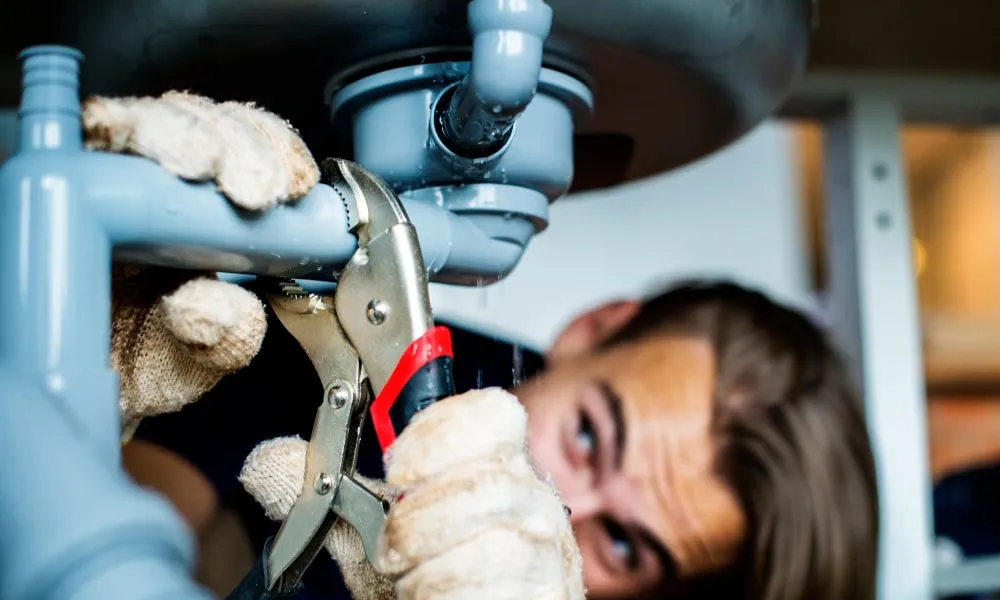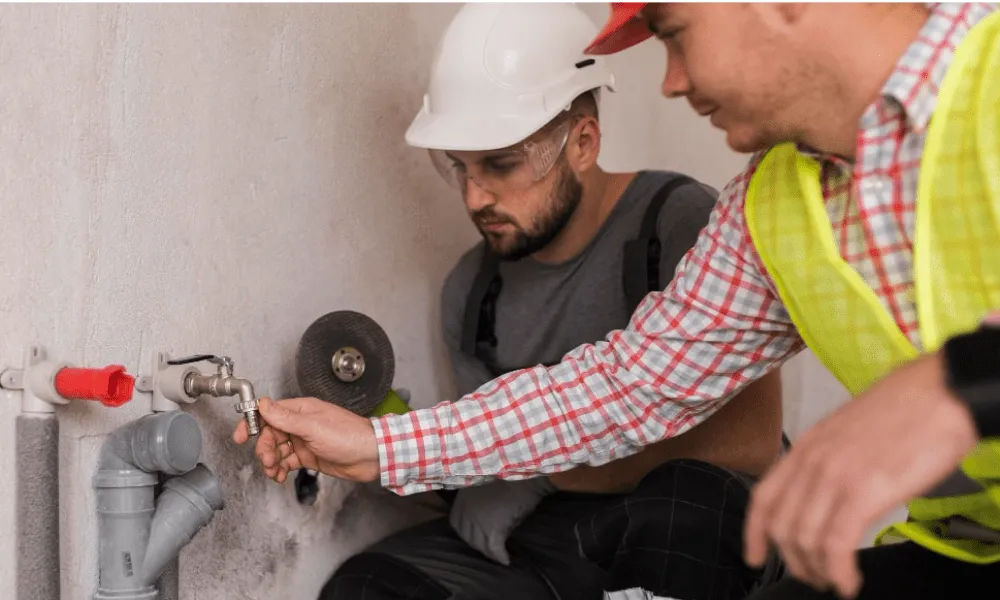
Sump Pumps – Do you live in an area that is prone to flooding? Or do you notice wet walls or floors after a heavy rain? A sump pump might be the answer to all your wet basement problems.
What is a sump pump and how can it help?
A sump pump is a submersible device that is installed in the basement or crawl space of your home to prevent flooding or the accumulation of standing water. It works by pumping excessive water out of the ground into a pipe that pushes water to the outside of the home.
Homes that are located in a flood zone, or homes with extra wet soil, can accumulate water through the foundation after a heavy rain.
This can cause damage to a home’s floors and walls, especially in a finished basement. It can also lead to mold and mildew growth which can be a major headache for homeowners.

What does sump pumps consist of and how does it work?
A sump pump is installed in a hole in the foundation of a home’s basement. It consists of several components that all work together to pump excess water to the outside. These components include:
- The “pit” (aka crock) is the hole in the foundation floor that collects water and contains the submersible pump. It ranges in depth from 30” – 36” and includes a liner and cover to ensure safety and easy removal of debris in the pit area.
- The drain pipe is installed beneath the pit’s surface and is instrumental in pushing water into the pit from the soil and/or rock beneath the home’s foundation.
- The submersible sump pump is the primary source that is responsible for pushing the water out of the pit. It runs on electricity so it will be plugged into a nearby outlet. The sump pump contains a float switch that is activated and turns the device on when water levels rise.
- The discharge pipe is attached to the sump pump and runs from the pit to the outside of the home. It is the channel that is used to pull the water out of the pump and away from the home. Inside the discharge pipe is a check valve which is used to prevent water from flowing back into the pit once the pump shuts off.
The discharge pipe will be long enough on the outside of the home to ensure the water is not discarded too close to the home. Otherwise, it could flow back into the sump pit, only to be pumped out again and again, which could cause premature failure of the sump pump.
Quality sump pumps typically last between 5-10 years, which equates to around 250,000 cycles. To ensure sump pumps are operating properly they should be checked twice a year for proper operation. They should also be cleaned periodically to remove any debris or gravel that may accumulate.
Navigating the Benefits and Drawbacks of Best Sump Pump
So, now that you know what a sump pump is and how it works, let’s explore the benefits that make them indispensable protectors and shed light on the potential drawbacks that necessitate careful consideration.
Benefits of the Best Sump Pump
Self-Activating: One of the benefits to the best sump pump operation is the float switch that self-activates when the water level in the pit rises. This will give homeowners peace of mind knowing that their sump pump will automatically kick on if water begins to fill up in the pit.
Highly Effective: Sump Pumps are one of the most reliable methods of preventing water from wreaking havoc in a basement or crawlspace. Many homeowners choose to waterproof a basement with treatments or special coatings.
While it may deter mold from creeping into the walls, it will not prevent flooding or standing water. Coatings can also break down and erode over time, so the only way to ensure minimal damage is by pumping water out of the space as soon as possible.
Prevents Mold: A flooded basement or seeping water can lead to rapid mold and mildew growth. Finished basements are susceptible since water can hide behind drywall and flooring.
Even in unfinished areas, mold and mildew can grow in crevices, wall studs, or insulation. Installing the best sump pump will protect a home’s lower-level living space ensuring a dry environment that minimizes the risk of mold growth.

Drawbacks of Sump Pumps
Electric Required: Sump pumps are electrical devices that plug into an outlet. This means sump pumps can stop working if the electricity goes out during a storm or other event. The good news is that a battery backup sump pump can be installed to ensure the sump pump continues to run if water is rising in the pit.
There are several types of backup sump pump options, each with pros and cons and several manufacturers, so the homeowner has several options to choose from.
Eyesore: Sump pumps aren’t the most aesthetically pleasing item in a home. A hole in the foundation with a pipe that runs through an interior wall to the outside of the home will have a tendency to stand out.
If the basement has an unfinished space a sump pump can easily be installed in the corner so it is less noticeable. If the basement is fully finished, it will be harder to hide.
Possible Exposure to Radon: If a home is at risk for high radon levels, installing a sump pump may increase the home’s chances of radon gas exposure. Radon is a gas that comes from the natural decay of uranium in soil and seeps into a home through cracks and other holes in the foundation.
The home then traps radon inside where it builds up and dangerous levels can occur. Since a sump pump is installed in a hole in the foundation, exposure to radon is possible. A cover can be placed over the pit which should minimize the radon if it exists, but to be safe the home should be tested after the sump pump is installed and if necessary, a radon mitigation system will need to be installed as well.
While a sump pump may not be the right answer for every home, if you’re experiencing a wet basement or crawl space and want to find a solution, Blue Chip Plumbing can help. Contact us here or give us a call today at (513) 999-6820 to get a free quote on installing a new sump pump today.

